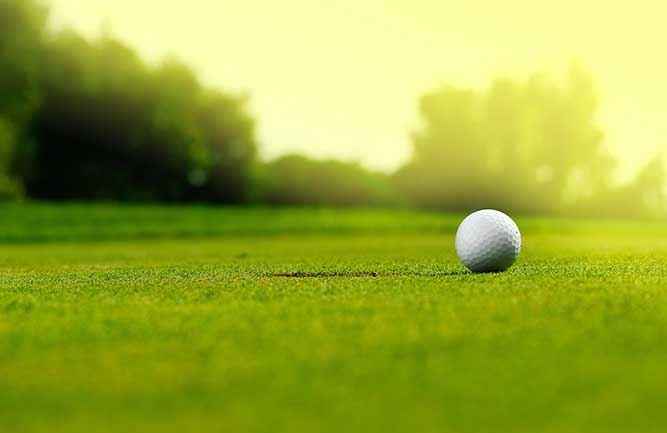Turf MD: How coring can improve overall turfgrass health

Karl Danneberger, Ph.D
People often view disruption as a negative, a means for changing the status quo. In business, however, disruption is often looked at as a positive. For example, a positive disruption saves a business money or makes it more efficient. In the biological or turfgrass world, disruptors alter the structure or function of the turfgrass system.
A fall management practice that I consider one of the original and annual disruptors of turfgrass is coring. Here, I define the practice of coring as using at least 1/2-inch hollow tines on 2-by- 2-inch spacing to a depth of 2.5 inches, with cores removed and sand topdressing applied to fill the holes.
Both sides of the coin
Coring includes aspects of both positive and negative turf disruption. From a negative perspective, it disrupts the status quo of a green as it makes the turf less stable or firm.
Golfers are most attuned with coring disruption. An uneven putting surface, lack of stability and firmness under footing are frequent consequences of coring. Golfers may avoid golf courses weeks after coring.
During relatively good growing conditions, it may take 2 to 4 weeks or longer for the greens to get back to the playing surface conditions prior to coring. Golfers’ concerns about coring often result in superintendents pushing coring later into the season. Spring coring is scheduled earlier in the season to avoid potentially good golfing weather.
A net positive
Coring, however, is a positive disruptor in turfgrass health over time by improving soil aeration, drainage and reducing organic matter. The benefits of coring consistently outweigh the disruptive effect on golf. Discussions questioning the frequency of coring between golf course superintendents and golfers often occur.
Occasionally, the question arises, ‘If we have USGA greens, can we just topdress with sand to control organic matter and eliminate coring?’
This is actually a good question. If organic matter control is the only concern and factors related to compaction are not, it is possible to topdress at a rate that can manage the organic matter. Like the line from the movie Top Gun, when Maverick says, “That is a lot of pushups,” it takes a lot of sand.
Generally speaking, on cool-season putting greens, it can take at least 25 cubic feet of sand per 1,000 square feet per year, while on hybrid bermudagrass greens, the amount of sand can exceed 60 to 70 cubic feet per 1,000 square feet per year. Getting this amount of sand down over the course of a growing season is intensive.
Coring and topdressing, as I described above, is an effective means to get a large amount of sand down. But helping to get the allotted sand topdressing material down is only one aspect of improving turfgrass health.
Best practices
To enhance turf recovery, core during times of optimum turfgrass growth. A good guide is when soil temperatures range between 60 to 65 degrees F. Use new or relatively new coring tines. A core cut with a sharp tine tip provides a clean cut. An old or dull tine tends to tear the turf around the hole, which requires a longer recovery time for the turfgrass plant from that of a clean cut.
After coring and topdressing, roll the green. Rolling will smooth the green, helping to reduce any minor deformities caused by coring. Check the moisture status of the green and irrigate it if needed to prevent any drying, desiccation or stress associated with coring.
When the greens look their best from both an aesthetic and playability view, spring and fall coring seems scheduled. It is in this context — the status quo — that coring is so disruptive. Turf disruption leads to enhanced turf health.












